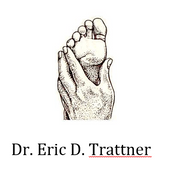
Many people worry if they discover they have nail fungus. This common condition has various symptoms and causes depending on the fungi species, and most are harmless. Here are four species you may encounter.
4 Types of Nail Fungus
1. Proximal Subungual Onychomycosis
People who are immunocompromised are more likely to get proximal subungual onychomycosis, like those who have undergone cancer treatments. These fungi species can yellow the part of the toes and fingernails closest to the cuticle, often after trauma, like stubbing or dropping something on the foot.
The nail fungus infiltrates the hard nail surface near the cuticle and causes a yellowish tint that spreads to the nail tip where you would use a clipper.
2. White Superficial Onychomycosis
 This less-common type of nail fungus affects the nail beds (where the nail meets the skin), plates (the part that you can polish, or matrixes (the tissue under the nail). People get this version of white growth more on their toes than their fingers.
This less-common type of nail fungus affects the nail beds (where the nail meets the skin), plates (the part that you can polish, or matrixes (the tissue under the nail). People get this version of white growth more on their toes than their fingers.
The fungi attach the outer layers of the nail and create white sections in striations or lines leading from the cuticle to the tip. These markings can cover the entire nail if untreated, causing it to crumble and fall off.
3. Endonyx Onychomycosis
Many people who have endonyx onychomycosis notice the skin under their nails turns white in patches. This unique nail fungus does not affect the surface of the nail plate but leaves a milky discoloration on the underside of the nail. These markings only go away when the affected part grows out.
4. Candidal Onychomycosis
People who have T cell immune disorders that cause chronic infections of the skin and nails may develop candidal onychomycosis. This species is caused by dermatophytes or surface fungus, and candida, or yeast.
You may have this fungus if you have one or several toe- or fingernails that are brown, yellow, or white, and seem brittle or split. This type is more common in people who have vascular diseases, HIV infections, or who are on broad-spectrum antibiotics.
If you’re interested in nail fungus treatment, contact the reliable staff at Dr. Eric D. Trattner in Cleveland, OH. The podiatry practice specializes in treating hammertoe correction without pins or stitches. Call the Lorain Road location at (440) 333-5350 or visit the website for information on their over 30 years of experience providing foot care and creating a relaxed and comfortable atmosphere.
About the Business
(16 reviews)
Have a question? Ask the experts!
Send your question

